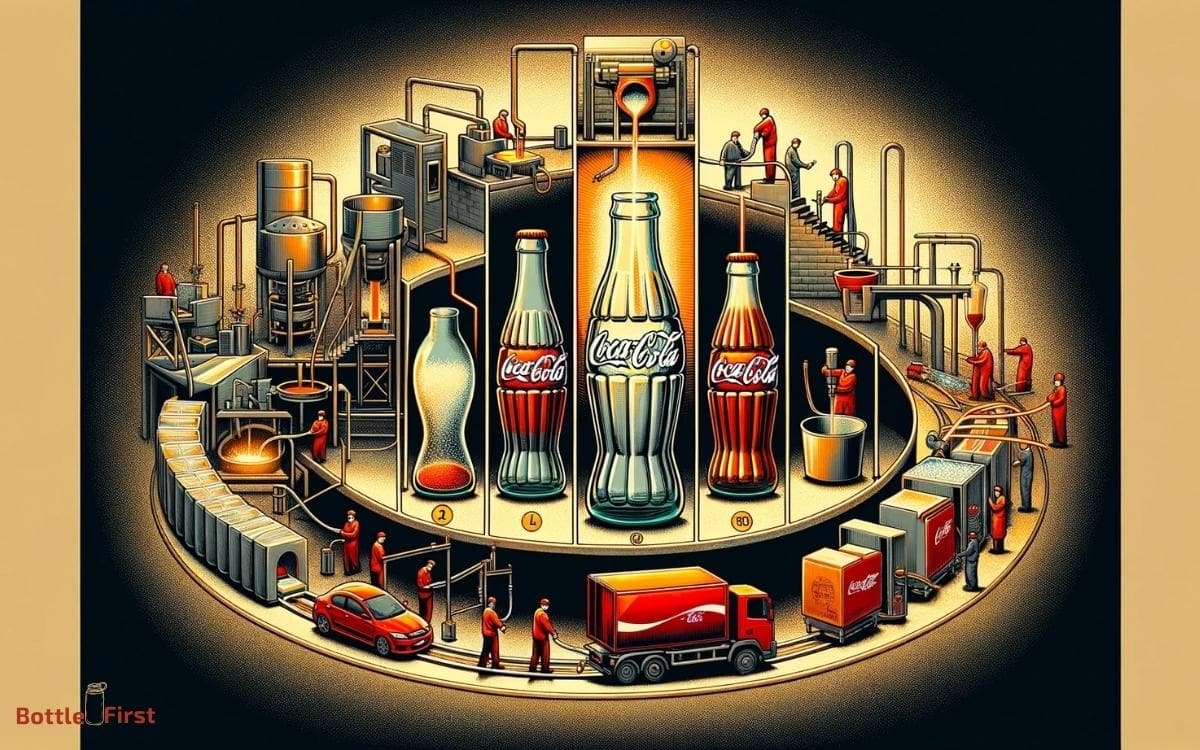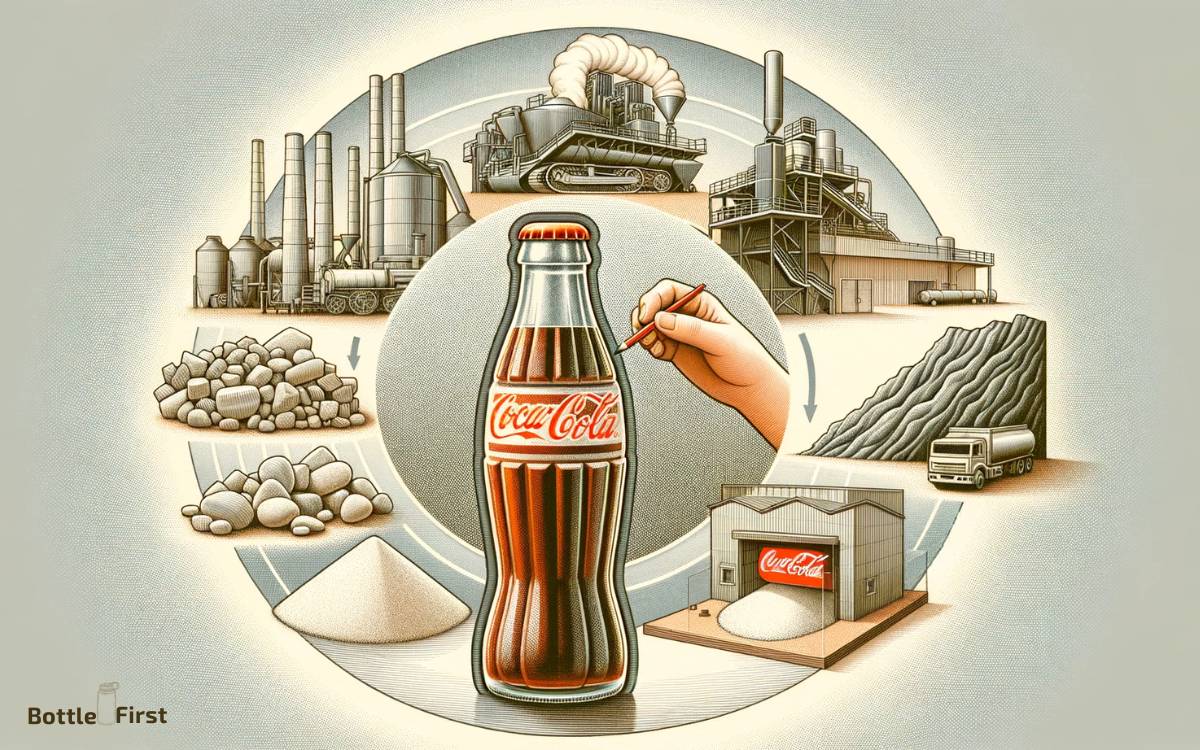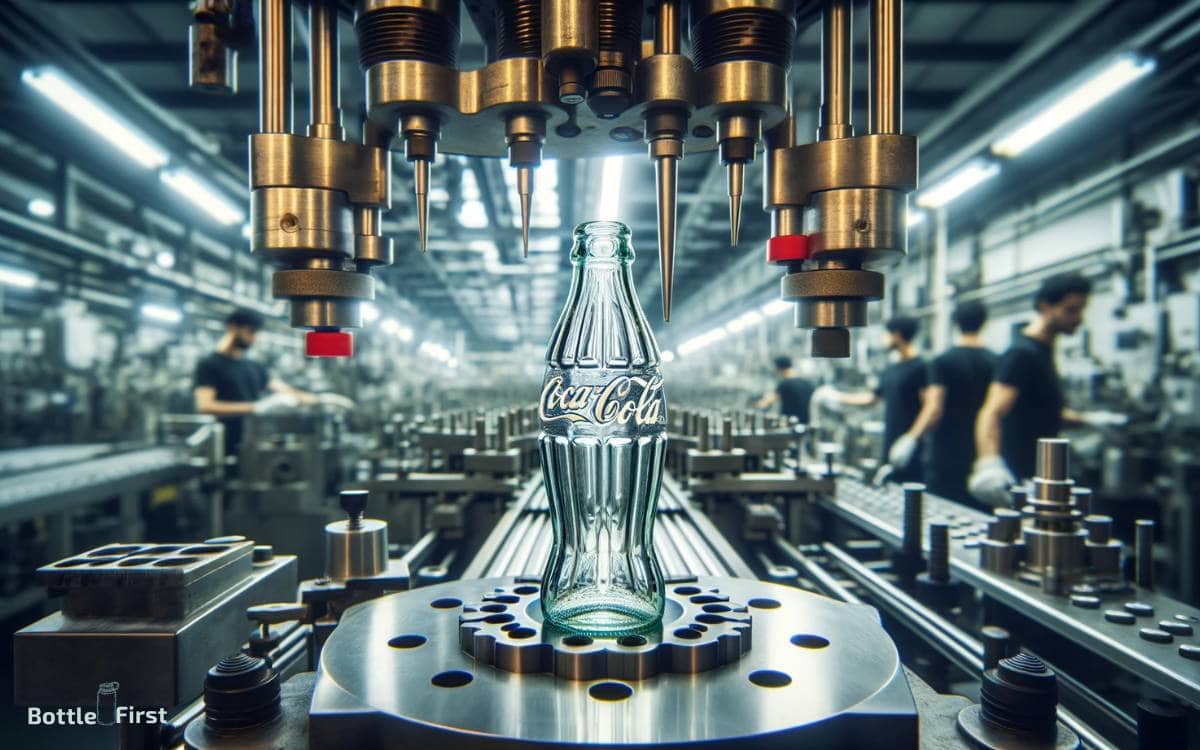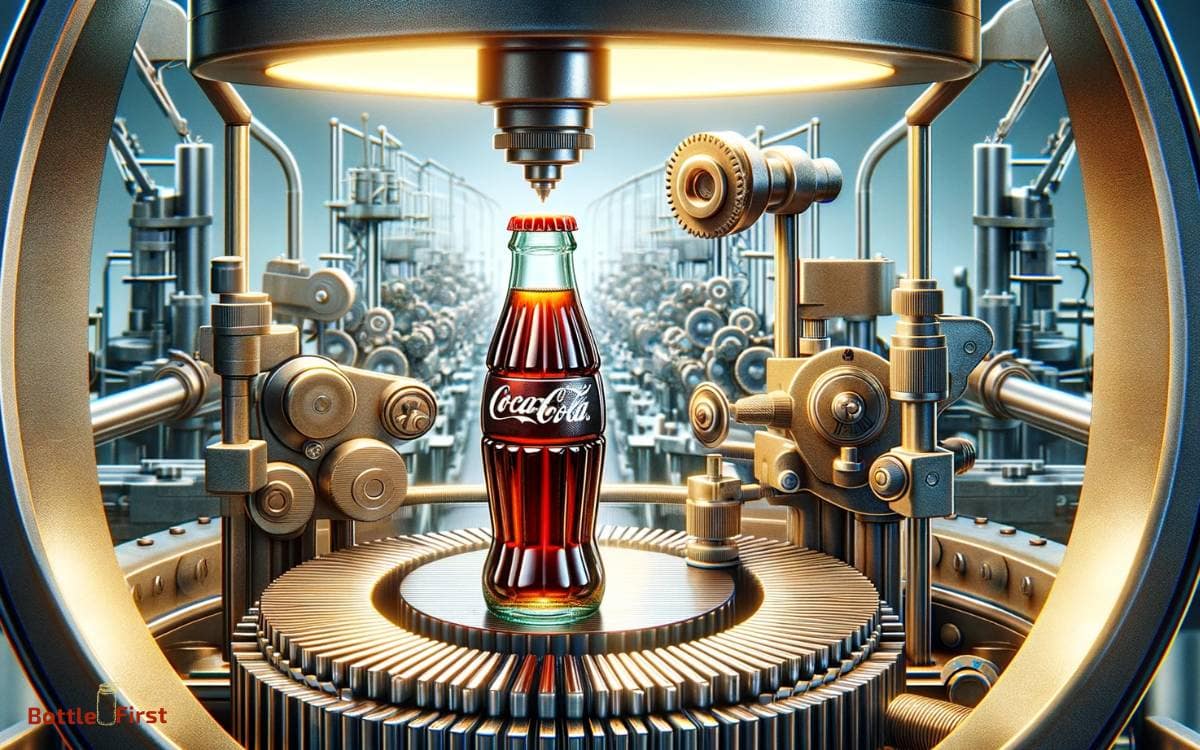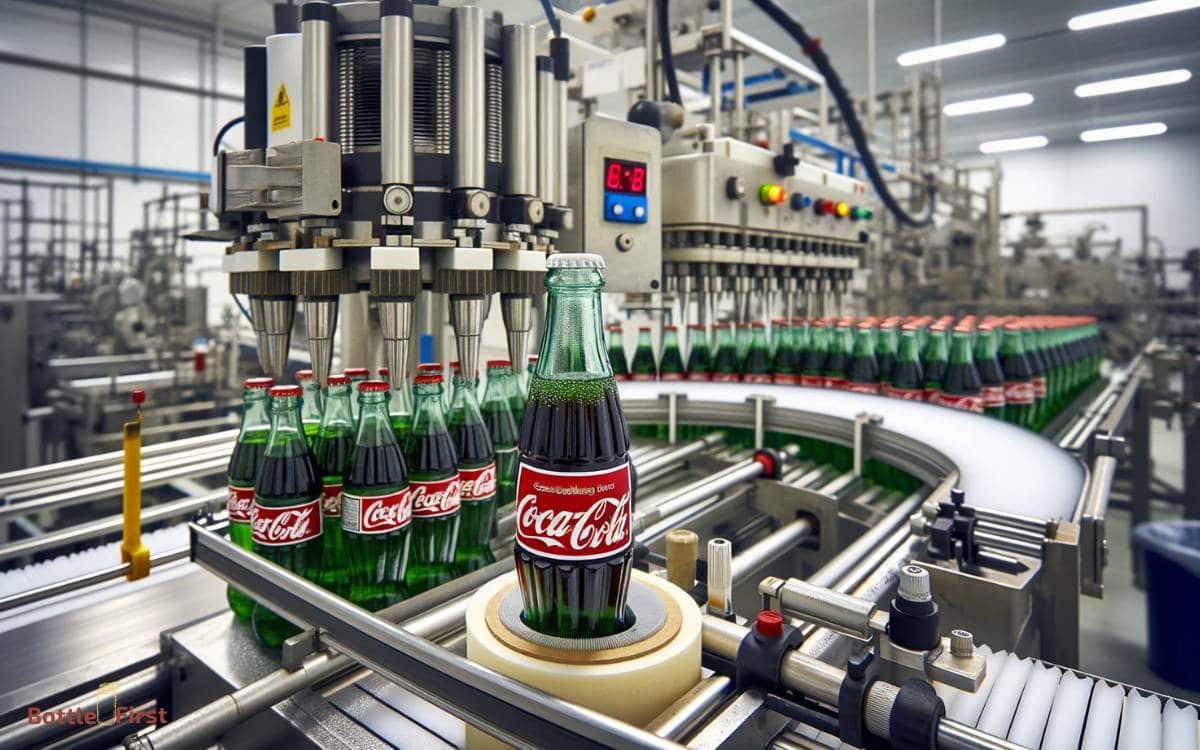Coca Cola Glass Bottle Manufacturing Process: Explained!
Discover the precise and advanced process behind the creation of Coca-Cola’s iconic glass bottles.
This comprehensive guide details each step from the initial gathering of materials to the final stages of quality assurance and delivery.
Learn how the beloved Coca-Cola glass bottle is crafted with a blend of tradition and modern technology.
The Coca-Cola glass bottle manufacturing process involves several key stages:
Experience the fusion of heritage and innovation in each Coca-Cola glass bottle, a testament to the brand’s commitment to quality.
Key Takeaway
Sourcing Raw Materials
To create Coca Cola glass bottles, we source raw materials such as sand, soda ash, and limestone from various locations around the world.
The innovative approach to this process involves seeking out the highest quality materials to ensure the durability and purity of the final product.
By carefully selecting suppliers who align with our commitment to sustainability and ethical practices, we not only guarantee the excellence of our bottles but also contribute to a more responsible supply chain.
The use of cutting-edge technology in the extraction and processing of these raw materials enables us to maintain the highest standards while continuously seeking opportunities for improvement.
This dedication to innovation in material sourcing sets the foundation for the exceptional quality and environmental consciousness that define Coca Cola’s glass bottle manufacturing.
Glass Melting and Forming
You melt and form the glass for Coca Cola bottles in specialized furnaces using a precise combination of raw materials.
The process starts with carefully selected sand, soda ash, and limestone being heated in the furnace to an extremely high temperature.
This causes the raw materials to fuse and form molten glass, which is then shaped using molds to create the iconic Coca Cola bottle design.
The precision in controlling the temperature and composition of the raw materials is crucial in achieving the desired strength, clarity, and consistency of the glass.
Innovations in furnace technology enable efficient and sustainable glass production, ensuring that each bottle meets the highest quality standards.
As the molten glass takes shape, it sets the stage for the next step in the process: bottle design and molding.
Bottle Design and Molding
When designing the mold for Coca Cola glass bottles, it’s essential to consider the intricacies of the brand’s iconic shape.
The molding process involves precise techniques to ensure the glass takes on the desired form, capturing the essence of the Coca Cola bottle.
Understanding the importance of mold design and the intricacies of glass shaping is crucial for achieving the distinctive look and feel of Coca Cola’s classic glass bottle.
Mold Design Importance
Creating the mold design for Coca Cola glass bottles involves carefully outlining the specifications for the bottle’s shape and structure.
The mold design is crucial as it directly influences the final look and feel of the iconic Coca Cola bottle.
Here’s why the mold design is so important:
- Precision: The mold design must be precise to ensure that each bottle is identical, maintaining the brand’s image and quality.
- Innovation: Incorporating innovative features into the mold design allows for unique bottle shapes and designs, keeping the product visually appealing and relevant to modern consumers.
- Efficiency: An optimal mold design not only ensures the desired bottle shape but also maximizes production efficiency, reducing waste and energy consumption.
Glass Shaping Techniques
To achieve the desired bottle shape and maintain consistency, the glass shaping techniques for Coca Cola bottles involve precise molding and innovative design features.
Advanced molds are used to shape the molten glass into the iconic contour bottle design, ensuring uniformity and quality.
The molds are crafted with precision to capture every detail of the design, from the signature curves to the Coca Cola embossment.
Innovative techniques are employed to create unique features, such as the distinctive grooves and fluting that enhance grip and aesthetics.
These design elements not only contribute to the visual appeal of the bottle but also serve functional purposes.
Quality Control and Inspection
During the manufacturing process, you inspect the Coca Cola glass bottles for quality control to ensure they meet the company’s standards.
Here’s how the quality control and inspection process works:
- Automated Vision Systems: High-tech cameras and sensors are used to detect any imperfections in the glass, such as cracks, bubbles, or uneven thickness, ensuring each bottle meets precise quality standards.
- Weight and Dimension Checks: Advanced machinery precisely measures the weight and dimensions of the bottles to ensure they meet the specified requirements, guaranteeing consistency and quality.
- Pressure Testing: Each bottle undergoes rigorous pressure testing to ensure its durability and resistance to carbonation, ensuring that it maintains its integrity during storage and transportation.
With quality control measures in place, the Coca Cola glass bottles are then ready for the labeling and packaging stage.
Labeling and Packaging
Now let’s talk about how Coca Cola glass bottles are labeled and packaged.
First, the bottle labeling process involves precise application of the iconic Coca Cola logo and product information. Then, the bottles are carefully packaged to ensure safe shipment to their destinations.
Bottle Labeling Process
When labeling Coca Cola glass bottles, you place the bottles in the labeling machine to apply the branded labels and prepare them for packaging.
The bottle labeling process is a crucial step in ensuring that the iconic Coca Cola branding is accurately and attractively displayed on each bottle.
Here’s how the process unfolds:
- Label Application: The bottles move through the labeling machine, where the branded labels are precisely applied to each bottle with cutting-edge technology, ensuring accuracy and consistency.
- Quality Inspection: After labeling, automated systems inspect each bottle to guarantee that the labels are flawlessly applied, meeting the high standards of Coca Cola’s branding.
- Preparation for Packaging: Once the labeling and inspection are completed, the bottles are ready for the packaging process, where they’ll be carefully arranged and prepared for distribution.
Packaging for Shipment
After labeling the Coca Cola glass bottles, you carefully package them for shipment, ensuring their safe transport and arrival at their destinations. The packaging process involves innovative techniques to protect the bottles during transit.
Each bottle is securely placed in its designated compartment within the shipping package, minimizing the risk of breakage.
Advanced cushioning materials are used to absorb any shocks or vibrations, maintaining the integrity of the bottles throughout the journey.
Additionally, smart labeling technology is employed to track and monitor the packages, providing real-time information on their location and condition. This ensures that the bottles reach their destinations in optimal condition.
As the packaging is completed, the next crucial step is the distribution and transport of the Coca Cola glass bottles to various locations.
Distribution and Transport
You can ensure efficient distribution and transport of Coca Cola glass bottles by implementing streamlined logistics and utilizing reliable transportation partners.
Implement advanced tracking technology:
Utilize real-time tracking and monitoring systems to keep a close eye on the movement of glass bottles throughout the distribution process.
This will enable you to identify any potential delays or issues and take proactive measures to ensure timely delivery.
Utilize sustainable transportation methods:
Embrace innovative and sustainable transportation methods such as electric vehicles and hybrid trucks to reduce the environmental impact of the distribution process.
This not only aligns with the growing focus on sustainability but also showcases a commitment to environmentally friendly practices.
Leverage data analytics for optimization:
Utilize data analytics to optimize transportation routes, minimize delivery times, and reduce costs.
By analyzing data on transport routes, traffic patterns, and delivery schedules, you can enhance the efficiency of the distribution process, leading to faster and more cost-effective deliveries.
Conclusion
So next time you pick up a Coca-Cola in a glass bottle, remember the careful process it went through.
From sourcing raw materials to quality control and distribution, every step ensures the iconic bottle reaches your hands just right.
With precision and care, each bottle is a testament to the craftsmanship and dedication behind the world’s favorite soda.
Cheers to the timeless tradition of Coca-Cola in a classic glass bottle.
